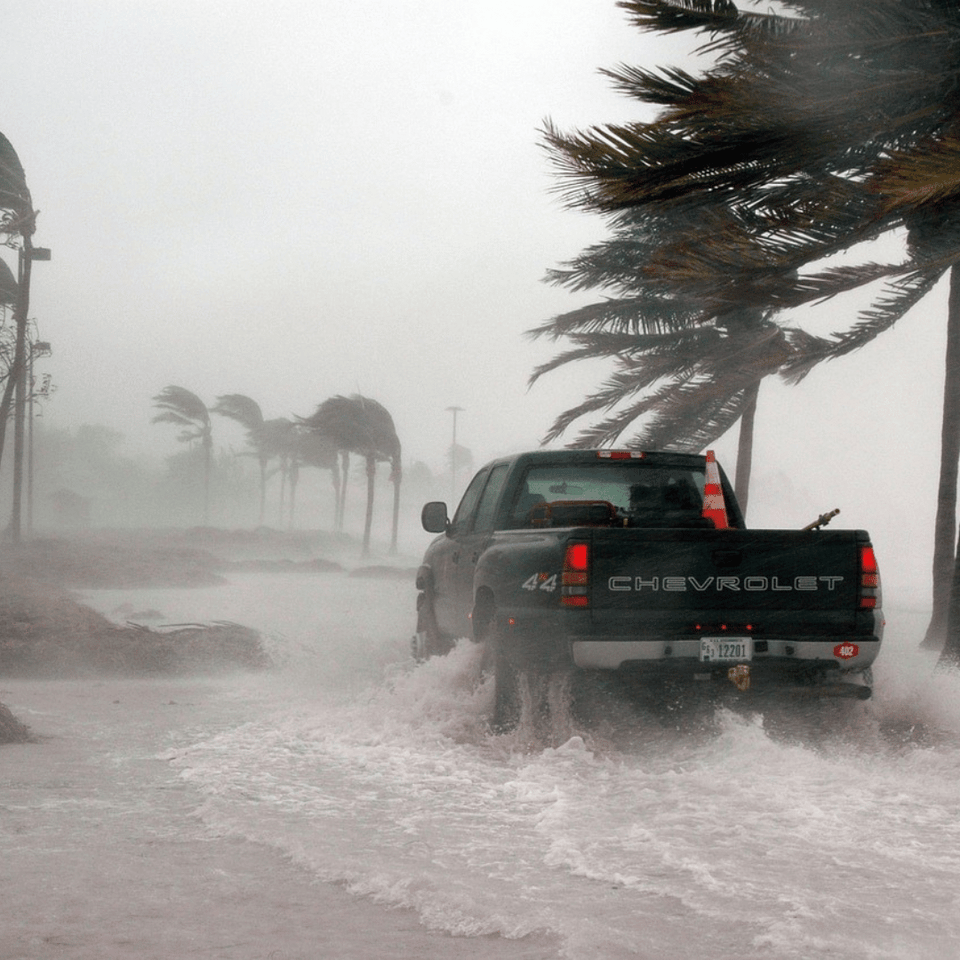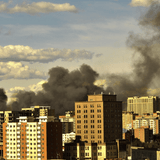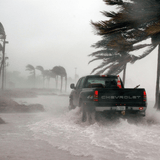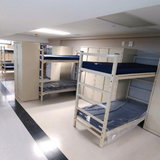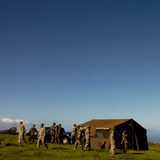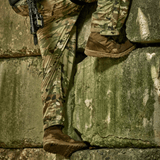Shelter-in-Place vs. Bug-Out: Survival Gear for Your Emergency Strategy
When disaster strikes, you’ll have to make a lot of decisions that affect your safety and well-being. The first and arguably most important is whether to stay put or evacuate.
There’s no one-size-fits-all answer. Each situation is different, and a lot depends on the nature of the threat, your location, and your ability to move safely. Let’s break it down.
Assessing Your Threat and Environment

The first step in deciding between sheltering-in-place or bugging out is to evaluate the nature of the emergency.
- Shelter-in-Place is usually the best option when the threat is immediate but localized, such as chemical spills, winter storms, or civil unrest nearby. Staying inside a secure location can keep you safe from outside dangers.
- Bug-out becomes necessary when your current location is unsafe or unsustainable, such as during wildfires, flooding, or long-term infrastructure failure. In these scenarios, you will need to relocate to a safer location.
Questions to Help You Decide: Stay or Go?
It isn’t just the nature of the emergency that matters. Numerous factors–including the severity of the threat, your access to resources, and physical ability–can also affect the decision. The following questions can help you decide whether to stay or go.
- Is my current location safe from immediate threats (fire, flooding, structural damage)?
- Can I secure the building to protect against external threats (chemical, biological, civil unrest)?
- Do I have enough supplies to last until conditions improve?
- Is it safer to remain indoors than to evacuate?
- Are evacuation routes open, safe, and accessible to me and my group?
- Can I physically manage moving myself, my family, and the required supplies?
- Do I have a reliable destination or bug-out location ready?
- How long can I realistically sustain myself if I leave my current shelter?
- What communication options do I have to stay informed or call for help?
- Have authorities issued clear instructions to evacuate or shelter-in-place?
Plan Ahead to Make Better Decisions
Disaster situations are chaotic. Trying to make smart decisions during this stress is difficult and mistakes can happen. Anything you do in advance to prepare will improve the chances of making the right call.
To start with, you will need to:
- Make a list of likely disasters in your area.
- Identify the unique dangers each event presents.
- Research which supplies you need to safely shelter-in-place or bug out.
- Create a detailed bug-out plan, including where to go.
- Start stockpiling supplies.
The more prepared you are, the clearer–and more confident–your choices will be!
Gear Essentials: Shelter-in-Place vs. Bugging Out
Regardless of whether you stay put or bug out, you will need the same categories of gear. These are: food, water, shelter and security, power, first aid and hygiene, tools, and communication.
The difference lies in how you select these items. Shelter-in-place gear should be designed for long-term use in a fixed location, even if the grid goes down. Bug-out gear, on the other hand, should prioritize lightweight, versatile, and durable items that you can carry with you on the move.
Food
Shelter-in-Place Food
Stockpile enough non-perishable food to last at least 72 hours—preferably longer. While you can stockpile non-perishables like rice and dry beans, remember that you may not be able to cook, such as if there is a power outage or gas leak. Because of this, your shelter-in-place food should also consist of non-cooked items like MREs.
Bug-Out Food
Choose lightweight, calorie-dense food that you can eat on the move without much preparation. Energy bars, jerky, trail mix, and MREs are all good options.
Water
Shelter-in-Place Water
The CDC recommends storing at least one gallon of water per person, per day, for a minimum of three days. However, most Americans use more water than this, so aiming for at least two weeks is better. Consider adding water barrels, rainwater collection, and water purification methods to allow for a long-term supply.
Bug-Out Water
Carry enough water for at least 24–72 hours, plus lightweight water purification methods such as water filters and purification tablets, so you can treat water from lakes and streams. Collapsible bottles or hydration bladders help keep you mobile.
Shelter and Security
Shelter-in-Place Shelter and Security
When sheltering in place, you may need to reinforce your home in order to remain safe. It varies depending on the type of disaster, but you may need items like plywood for reinforcing windows or sandbags for keeping floodwater out.
Bug-Out Shelter and Security
Choose a lightweight, durable shelter, such as a small tent or bivvy, to stay sheltered while you bug out. Sleeping bags and pads are necessary in cold weather. For personal safety, self-defense items like pepper spray and a licensed firearm are options.
Power
Shelter-in-Place Power
Backup power sources, such as spare batteries and power banks, can keep essential devices running during a blackout. If your budget allows it, you can invest in more powerful solutions, such as generators and solar power setups with battery storage.
Bug-Out Power
Hand-crank or solar-powered phone chargers can keep your phone or GPS functional. If bugging out by vehicle, a power station is also an option.
First Aid and Hygiene
Shelter-in-Place First Aid and Hygiene
Your first aid kit should be well-stocked to handle a range of injuries and health issues, as well as any personal medications. Don’t overlook hygiene items. You’ll need an emergency toilet, gloves, disinfectant, sanitary items, and masks.
Bug-Out First Aid and Hygiene
Your bug-out first aid kit should be compact and lightweight, designed to treat injuries on the move — cuts, sprains, blisters, and major bleeds. Antiseptic wipes, pain relievers, bandage materials, and tweezers are essential. Hygiene items are less crucial on the move, but you will still want disinfectants.
Tools
Shelter-in-Place Tools
Disasters can damage your home. To stay put, you will need tools and supplies to fix damage, such as tarps for sealing broken windows or roofs, a wrench to shut off water valves or gas mains, or saws to clear debris.
Bug-Out Tools and Resources
Your bug-out tool kit should be small, lightweight, and versatile. Items like a multi-tool, paracord, a knife, and duct tape allow you to do tasks like patching gear, creating shelters on the go, or fashioning a splint.
Communication
Shelter-in-Place Communication
Hand-crank or battery-powered radios help you stay informed about the disaster. A backup phone or a landline can be useful if service drops.
Bug-Out Communication
Like with staying put, you’ll need an emergency radio for bugging out. However, you’ll also need a communication plan in case you get separated from your loved ones.
Getting Started
Preparing for emergencies can feel overwhelming, but the best approach is to start with simple, practical steps. Identify the most likely disasters in your area, honestly consider whether you’d shelter in place or bug out in each scenario, and begin building a supply kit that supports both options safely and effectively.

